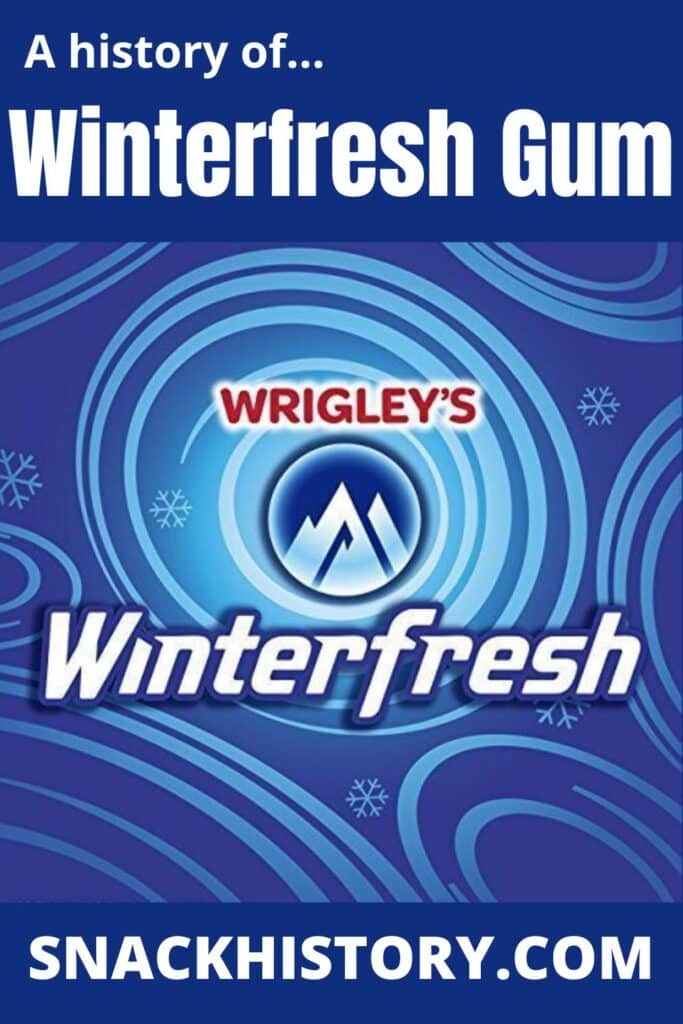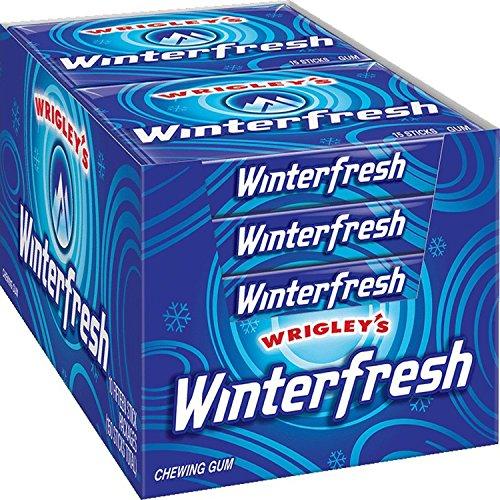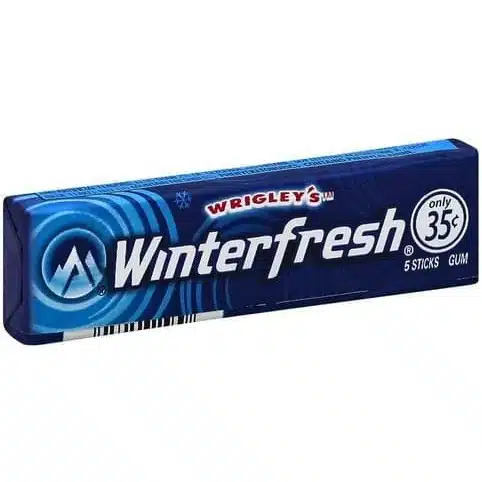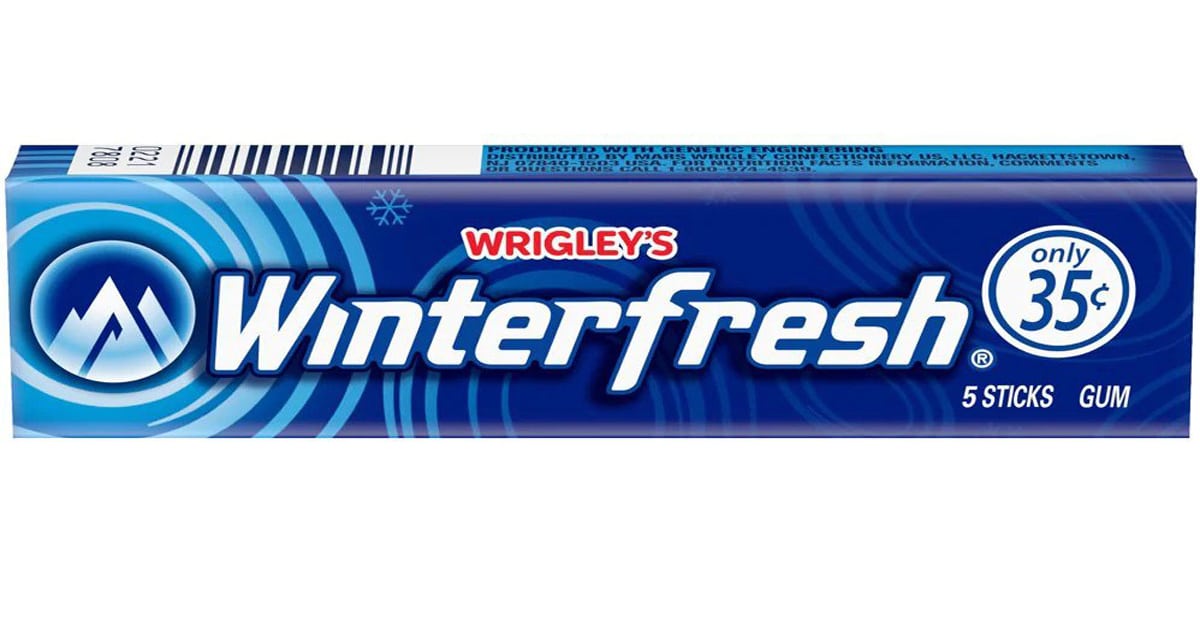Winterfresh Gum (History, Commercials & Marketing)
Gum that serves primarily as a breath freshener is actually not a new concept. The earliest gum products were made with this goal in mind and were not sold for any other reason. However, the earliest gum products made to cover up bad breath were very strongly flavored and can be quite unenjoyable to chew. Most of these products were made to be chewed briefly and then spit out once your breath was in good order.
Gum products that were enjoyable to chew on were not really on the menu of things that were offered in stores and gas stations until the 1950s. Gums that were aimed at those trying to lose weight or to be more popular and social were not really sold until the 1960s. Winterfresh Gum is a relative latecomer to the gum product niche compared to some other long-running favorites, but it quickly usurped the position of many of these older gum products due to its really refreshing flavor and the pleasantness of its texture.
Please leave a review or any memories of this snack in the comments at the bottom of this page. Thank you!

History
Winterfresh Gum was first sold in 1994. This gum was originally made by the WM Wrigley Jr Company. The Winterfresh product was added to the Big Red gum that the company was selling really well by the mid-90s. The Wrigley Company originally sold soap and baking powder. The company got its start in 1891, and by 1892, they were offering gum in the packages of baking powder that they were selling. The gum products quickly became more popular than baking powder, and the company made the switch from baking powder to gum right away.
Wrigley was very clever when it came to advertising, and he knew that he needed to create a groundswell of interest in his new gum products. To do this, he sent free samples of the product to everyone listed in the US phone books at the time. This was the first direct-marketing campaign done in this way, and it was a success! While Winterfresh was not marketed using this method, the very popular Double Mint Gum was marketed using this creative plan.
During World War II, Wrigley Gum products were included in all of the packs of supplies that were sent to the front. This helped to save the company and made sure that the brand became a household name associated with their support of the armed forces. After the war, Global expansion was done by William Wrigley III, who created the first 10-piece packs and adopted UPC bar codes to make sure that Wrigley’s Gum could be sold in more markets.
The early recipe for all Wrigley gum products used chicle from Mexico, but supply issues led to a change to synthetic rubber, which was easier to make and source. This helped the brand to grow and made it possible for them to acquire Life Savers and Altoids in 2005. By now, Big Red and Winterfresh Gum were the mainstay of the company’s products and were the primary areas where effort was being put in to generate income. Sugar-free gums became a new focus for the company as well during this period, and Wrigley’s developed Extra, a sugar-free gum that would hold its own alongside competitors for some time.
Sugar-free gums came under fire for their claims that they would make people lose weight and that they could help with oral health and concentration in the early 2000s. This led to a variety of sugar-free gum products falling out of favor, Extra among them. Thankfully, Big Red and Winterfresh Gum were selling as well as they ever had, and the loss of sales in the sugar-free product list was not a huge loss for the company.
Despite the new acquisitions that were made by Wrigley during this period, they ended up selling Wrigley’s gum products to Mars Inc. in 2008. The Wrigley Building on Michigan Avenue was sold, and the Wrigley Company bowed out of gum-making for good. Generations of Wrigleys had managed the gum products that were so familiar to everyone by now, but this was the end of an era.
Thankfully for those who loved Wrigley gum products, Big Red and Winterfresh gum continue to be sold under the management of Mars Inc. Minus some changes to the recipe of the gum products related to requirements around sweeteners in gum products, Winterfresh is much the same as it has always been. The gum that you are chewing today when you buy a pack of Winterfresh Gum is the same recipe that you would have been able to buy in the mid-90s.
Many people love the surprisingly refreshing nature of Winterfresh Gum, and this is likely one of the main reasons that this gum has performed so well over time, even against tough competitors in the same space. Gum that is made to freshen your breath is nothing new, but some gum products just take on the task more effectively than others. Perhaps due to the longevity of the Wrigley Gum company and its entry into the gum product niche when chewing gums were only made to freshen your breath, this gum offers the kind of long-lasting flavor that most people are looking for first and foremost when they decide on a gum product.
For those who have not enjoyed Winterfresh Gum before, its unassuming packaging might be misleading. This is a gum that is packed with wintergreen flavor and the tingle of spearmint. There is something about chewing this kind of gum product that is just so much nicer than using a breath mint, and the popularity of these products testifies to their enjoyable nature.
Livery
Winterfresh Gum is always sold in a package that shows wintery-looking mountains on the left side and the price of the individual pack on the right. There are little circles of lighter blue color around the mountains, and these circles show up behind the Winterfresh logo as well. Wrigley gum products were always sold with stripped-down and simple marketing ploys like this, making them instantly recognizable as compared to colorful and busy products that were targeted more at kids.
There were originally just small packs of five sticks of this gum offered all over the US, but today you can also get larger packages that contain fifteen sticks. The branding looks the same on the larger packaging. With the purchase of the various Wrigley Gum products by the Mars Inc group, some small adjustments in the branding of the Winterfresh Gum livery took place.
The lettering in the logo is slightly softer around the edges, and the blue is a bit darker in the background of the wrappers and packaging. There were similar changes made to Big Red and Juicy Fruit, but Doublemint stayed largely the same. Most of the changes to the livery for all of these gum products were really small and were done with small adjustments to the size and nature of the font in the logos. The original colors were retained, and the original messaging for the brand remains largely unchanged.
The only other switch of note within the Winterfresh recipe is that in some markets, it is sold with xylitol as the main sweetener. This caused some uproar among those who love Wintefresh Gum, as some people cannot tolerate this sweetener. Many sugar-free products contain xylitol, but products that are not listed as being sugar-free usually are not sweetened with this ingredient. This is something that those with allergies should be aware of, and it can be wise to avoid this gum if this is an issue for you.
Logo

Ingredients
From the HEB Entry for this gum product:
- Sugar
- Gum Base
- Dextrose
- Corn Syrup
- Natural and Artificial Flavors
- Less than 2% of: Glycerol, Aspartame, Soy Lecithin, Acesulfame K, Color (Blue 1 Lake), BHT (to Maintain Freshness)
Nutrition
| Serving Size: | 1 stick (2.7g) | % Daily Value* |
| Amount Per Serving | ||
| Calories | 10 | |
| Total Fat | 0g | 0% |
| Sodium | 0mg | 0% |
| Total Carbohydrates | 2g | 1% |
| Sugars | 2g | |
| Added Sugars | 2g | 4% |
| Protein | 0g | |
| Vitamin D | 0mcg | 0% |
| Calcium | 0mg | 0% |
| Iron | 0mg | 0% |
- The % Daily Value (DV) tells you how much a nutrient in a serving of food contributes to a daily diet. 2000 calories a day is used for general nutrition advice.
Pictures


Commercials
The most well-known of the ads for Winterfresh Gum used the “Cool Breath Power” slogan. This was an ad story that showed that people were more attractive if they chewed Winterfresh Gum, and the ads indicated that you would attract the opposite sex with ease if you chewed it. Another part of this ad campaign was the “Attraction Chronicles,” which were targeted at teens. This was usually an ad that used a narrator giving oddball love advice while kids chewed gum and made friends with one another.
These ads were a big part of the early success of this gum, as self-conscious teens bought up packages of Winterfresh Gum to make sure that their breath was good enough for dating or even kissing at all times. Marketing gum to teens was a pretty new concept at the time, but it worked really well with this gum. Most adults already had their favorite gum products, but teens were ready and willing to find a gum product that would help them to be more popular.
An ad from 1998 which just screams the 90s right from the start:
Another 90s commercial:
An ad from 2000:

My name is Brianna and I love writing on all topics. Candy history fascinates me and I am passionate about sharing my love of this topic with everyone else!
Please leave a review or any memories of this snack in the comments below. Thank you!
Click here for a full A-Z list of Snacks and Candy
